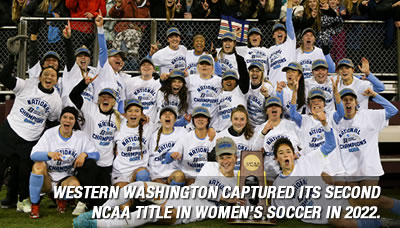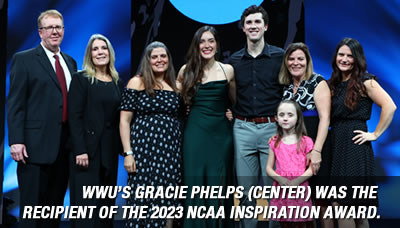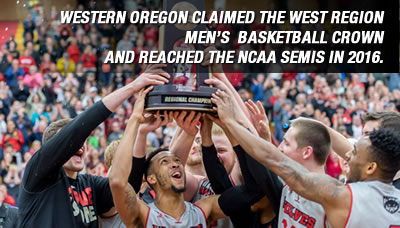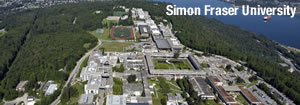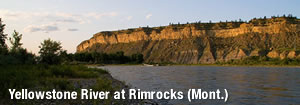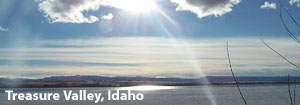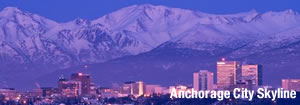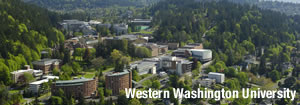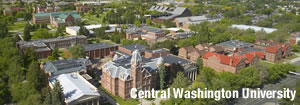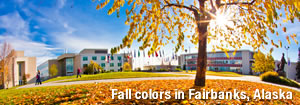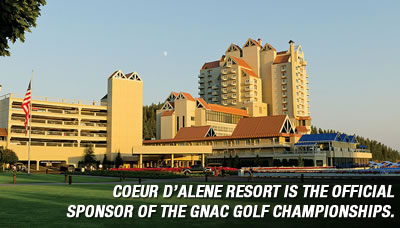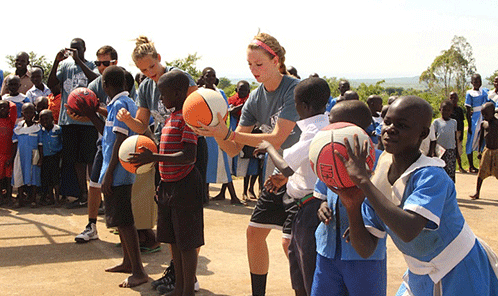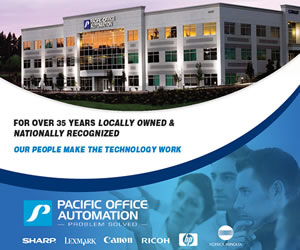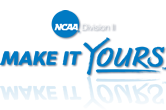Thursday, July 3, 2014
BY MIKE STETSON
NAMPA, Idaho — All last year, Northwest Nazarene University basketball fans bought blankets to bundle up and stay warm.
But those blankets are doing so much more than just keeping NNU sports fans warm on winter nights or out at cooler Crusader sports events.
The blanket sales were a fundraiser to help pay the $5,000 construction costs involved with building a basketball court in Nyaravur, Uganda, as part of the “Courts For Kids” program.
Northwest Nazarene junior-to-be Taylor Simmons worked with “Courts For Kids” in high school previously, and saw the opportunity to help out once again as another once-in-a-lifetime opportunity.
Simmons solicited a group of family and friends to serve as a construction crew for a court in Uganda, and a group of 11 went to Africa from May 13-26 in the program completely under the direction of “Courts For Kids.”
While not an NNU Athletic program, the commitment to service that Crusader student-athletes show led to eight Crusaders being part of the trip, as Simmons’ women’s basketball teammates Katie Swanson, Ellen Ferrenburg, Cierra White, Leslie Warwick and Kayla Schumann all took part in the adventure.
They were joined by NNU women’s basketball team manager Matt Veteto and NNU baseball player Will Rieke, along with Simmons mom, Jacque, and Taylor’s sister, Samantha, and brother-in-law, Luke.
“We learned a lot and saw a lot and got to experience a different culture and got to learn some of their language,” Taylor Simmons said. “It was really eye-opening for sure.”
GETTING THERE, & BACK
The voyage from Southwestern Idaho to Nyaravur, Uganda, took more than 38 hours; a journey filled with plane flights and bus rides, as the group touched down in Natete, Uganda, and spent its first day in Africa at Kampala University.
The Crusaders were greeted in Natete by Sam Obol, the coordinator of the Uganda project for “Courts for Kids,” and he accompanied the group for the remainder of their stay in Africa.
While at Kampala University, the team got to stretch their legs with a basketball scrimmage on the outdoor court on the campus prior to a 7-hour bus drive north to Nyaravur.
“We just got to see a lot of the differences between the big cities and the rural area,” Simmons said of the bus-ride north. “Big cities, like Kampala and Natete, are well developed and you got to see the huge difference between the city communities and the rural communities (like Nyaravur).”
But those rural communities can be very special places, as the Crusaders quickly learned.
“When we got to Nyaravur, we were greeted by this group of dancers and drummers and singers,” Simmons recalls. “They paraded our bus back into the court-site.
“It was a fun little welcoming party, and they did a dance for us,” she added. “Yeah, it was pretty cool.”
Simmons adds that the return trip back to the United States took even longer than the travel to Uganda.
ADJUSTING TO RURAL AFRICA
It might go without saying, but living in the rural African town of Nyaravur, Uganda, proved to be a new experience for the Crusaders, who were hosted by a family in one house with several small rooms.
“They were very, very small rooms, just enough room for two little cots,” Simmons said. “In my mom and I’s room we could only fit one suitcase in there.”
Small rooms weren’t the only change.
“No electricity, no running water, no plumbing,” Simmons recalls. “We were taking bucket baths every night. No toilets, just a hole in the ground.
“The accommodations were a difficulty for a lot of people,” she said. “The accommodations were rough, but part of the experience.”
Another part of the experience in rural Africa was the different cultural traditions that included special welcoming gifts, which came as a bit of a surprise to the Crusaders.
Taylor’s mom, Jacque, was presented with sugar cane as a gift.
And upon their arrival, the Crusaders host, Peter Wathum, presented the group with another “gift.”
“One of the main gifts — it wasn’t expected but it was an honor — is to give your guest a chicken or goat to kill and eat, so he gave us a goat,” Simmons said. “They parade out this goat, and it was all decorated in flowers on its head and its feet.
“They presented it to us and they were going to kill it in front of us and (my sister) Sam was like, ‘Now? You guys can just wait.”
The gift was later prepared for dinner, and Simmons ads that one of main meats people eat — including the Crusaders — in Uganda is goat meat.
BUILDING THE COURT
Once at Nyaravur the work of building the court began for the Crusaders, who had plenty of local help from hired hands.
Before the five-day project tipped off, though, more than 1,000 people turned out for a groundbreaking ceremony.
“They usually don't do that, but there was a ton of people there,” Simmons said. “There were politicians and community leaders and a lot of people who gave speeches and welcomed us and told us how excited they were for the court to come to that area.
“So that was neat to be able to sit there and listen to them.”
When the ceremonies concluded, the work began. And it truly was work, as nearly everything was done by hand.
The construction crew used wheelbarrows to haul dirt, gravel, sand, rock and concert, used shovels, picks and hoes to prep the ground, and maybe the most interesting element was getting water to mix concrete.
“With no running water, that was the challenge,” Simmons said. “So we had hired women to carry five-gallon jerry cans from the well that was a third of a mile away.
“One of the hard parts was pumping the water,” she added. “The well we were using was extremely hard to pump. You could barely fill a can before you’d be tired.
“These people are so strong, it was incredible.”
Once they got the water to the court-site, another problem arose — no concrete mixers, which were government controlled the crew learned.
So the Crusaders and their helpers mixed concrete by hand with sand, then fiber mesh, rock and water before pouring the court.
“So it wasn’t the smoothest when we got done with it, but it will work fine,” Simmons said.
Of course, spending five days working on the court proved to be quite a spectacle in the north-African community, as probably 500 kids would gather each day to watch the work.
Or, more precisely, watch the “white people.”
“You would sit down and you’d have like 100 kids just staring at you — they’ve never seen white people before,” Simmons said. “So we were like entertainers the whole week to the kids.”
The Crusaders played a variety of games with the kids who visited the court-site, the favorite far and away being “Duck, Duck, Goose.”
Simmons adds that the number of community workers helping out freed up the Crusaders to spend more time with the kids, and the community.
“It made it nice because we had so many workers that we could play with the kids then come back and work, so it allowed us to be more integrated into the culture and learn stuff and talk to the people because we didn't have to just work all the time.”
BASKETBALL 101
After five days putting the court together, it was again time to celebrate, as 1,200 people turned out for the opening ceremony of the court.
Maybe the most interesting part of the “dedication” of the court was the chance for the Crusaders to teach the game of basketball.
“These people had never seen basketball before, never played it, never watched it, hardly any had even heard of it, so it was like no experience whatsoever,” Simmons said. “So it was like starting at ground-zero with everybody, it was like, ‘No, you can’t kick the ball. Rule No. 1, no kicking the ball.’”
The Crusaders played an intra-squad scrimmage to demonstrate the game, then started doing clinics with the throng of people, with each “clinician” taking a group of 20 Ugandans and teaching them the basic skills of basketball.
“We just tried to demonstrate form shooting, demonstrate passing, demonstrate dribbling,” Simmons said. “We just tried to work with some of them so they can try to teach others.
“Our hope is we helped enough people that we got them started and they can help teach others.
“It was really cool getting to work with kids from kindergarten all the way up to adults,” she added.
AFTER THE WORK WAS DONE
The trip to Africa involved more than basketball and building a court for the Crusaders.
First, Simmons points out that the court in the community of 26,000 will provide more than just a surface to play hoops.
Cohan Moses, who applied to “Courts For Kids” for the court looks into the future for Nyaravur and sees the court as a gathering area, a market place for the community to start selling its own resources rather than depending on importing most everything from larger cities far away.
“It was interesting to see things from his perspective on the people, that they don't see into the future, they don't see that they can make a difference or change their community,” Simmons said. “So his hope for the future was inspiring.
“This court will draw people in and be a place for kids to play and it will be a place for people to gather.”
The court is located on the grounds of the local Catholic Church, and the Crusaders also got a chance to attend service on Sunday at the church, and were special quests at a unique Sunday experience.
The church is the site of the local primary and secondary schools, as well, and the Crusaders learned that nearly 1,500 kids attend primary school — grades kindergarten through eighth — but only about 30 percent of those students advance to secondary school.
The biggest hurdle?
Cost, as primary school is free, but families must pay $100 per semester for a student to attend secondary school, a fairly large sum of money in Uganda.
At church on Sunday, the Crusaders were invited to speak to the congregation about building the court, and Simmons says they were heartily welcomed.
She adds that the church was overflowing with more than 700 people, including kids of all ages who encircled the pastor at the front of the church, and continued to run and play while the service went on, unfazed.
Other events — when the work was done — the Crusaders construction crew enjoyed were a safari, a game drive and a Nile River cruise.
“We got to see elephants and giraffes and warthogs and antelope and caribou and monkeys and baboons,” Simmons said, adding, “and we saw a ton of hippos and crocodiles in the water, and we went on a boat ride up to Murchison Falls.”
And when the day’s work or adventures were done, the Crusaders got a chance to bond and reflect.
“It was fun to go out during the day, see all those things, play with those kids, work really hard and come back at night and talk about it and get to share what we saw and what we experienced and what we learned,” Simmons said. “So I really enjoyed our nightly debriefing.
“I would say I think we grew a lot closer (as a team) in sharing those experiences, getting to pray about it every night and getting to thank God for the blessing that it was that we were there and the impact those people had on us, and hopefully the impact we had on them.”





